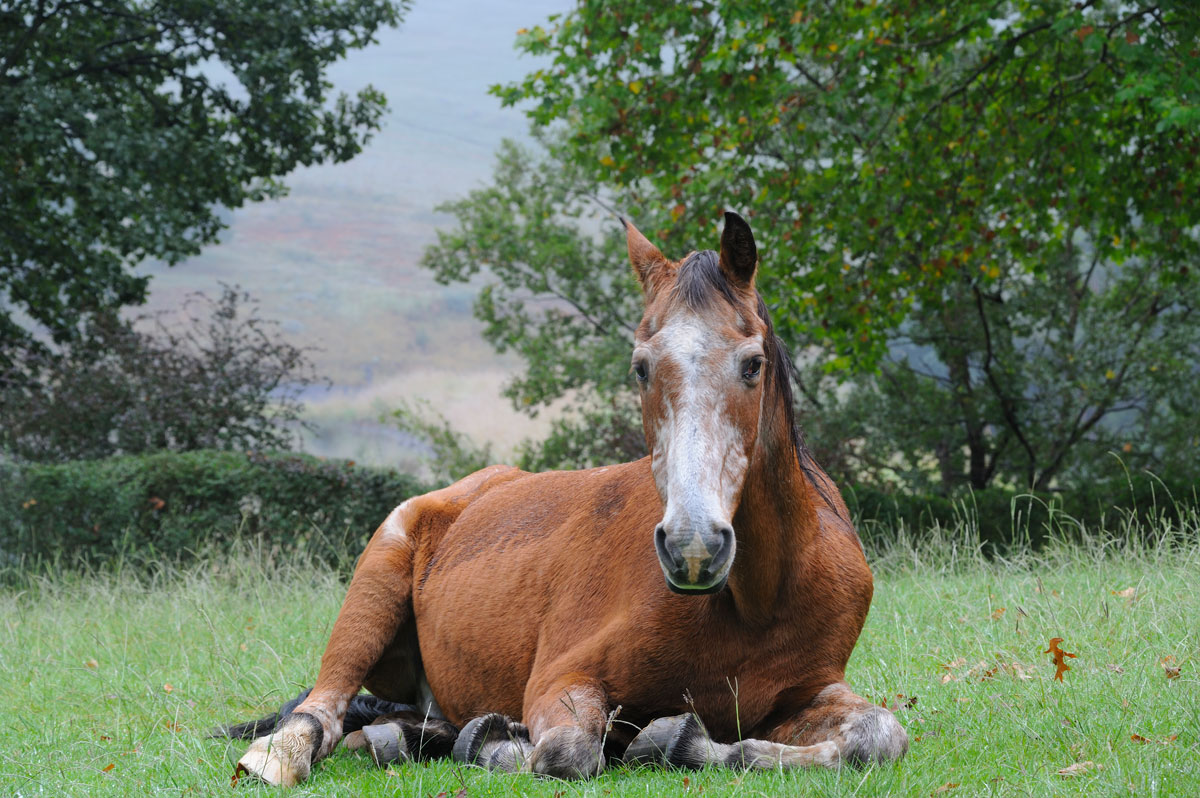
A common issue with older horses is stiffness and pain in various joints. It might be more difficult for them to hold their feet up very long for trimming or shoeing. “The farrier may need to have more patience with them, or should work very quickly and briefly on each foot, rotating from one foot to another (or even working on another horse in between) instead of keeping a certain foot up off the ground very long,” said Dr. Tia Nelson, a veterinarian who also owns horses near Helena, Montana.
These older horses might need more attention from the farrier because they might wear their feet differently than when they were younger. Footing is also an issue; the older horse might not tolerate being continually on firm ground or handle the concussion when exercising as well as he did when he was younger. Softer ground might be more comfortable for the senior horse.
Your farrier might be able to roll the horse’s toes on his shoes (or barefoot trim) to ease breakover, or he might come up with some type of innovative shoe that could help an arthritic horse.
Many horses develop arthritis in multiple joints as they age, especially if they’ve had an active career with a lot of stress on their joints. We tend to think mainly about the wear and tear on leg joints, but other joints in the body can also be affected with arthritis. Some horses get arthritis in the neck, just like people do. A few of these horses develop neurologic issues if arthritis in the neck becomes severe.
Arthritis in the neck can impact the spinal cord and/or put pressure on the spinal nerves where they come out between the vertebrae. This could lead to development of wobbler-type clinical signs. If a nerve gets pinched where it comes out of the spinal column, the impulses are damaged after they’ve exited the spinal cord, and you might see areas on the neck where the normal muscle mass is diminished. The horse also might sweat abnormally in these areas, producing more sweat in the affected areas than the rest of the neck.
If the arthritic horse that has stall time has trouble getting up and down because of painful leg joints, the bedding should be deep enough to give adequate footing so he can push himself up. Many people use mats in stalls. If you don’t have deep enough bedding on top of the mat, it can become be slippery and the horse might not have enough traction and is forced to scramble to try to get up. Some horses will give up and just lie there or might be reluctant to lie down in the first place.
“We had one old horse with joint issues, and we used Adequan and Legend on him, along with joint protection products from Platinum, and he did well. It was just a matter of keeping him comfortable,” said Nelson. Some people use non-steroidal anti-inflammatory medications such as bute or Equioxx.
There are other therapies that can be helpful. With horses that are still active as performance horses, owners are encouraged not only to use the usual arthritis medication such as hyaluronate sodium (Legend) and polysulfated glycosominoglycans (Adequan), but also to consider acupuncture, chiropractic and massage as adjunctive therapies if that’s what it takes to help keep those horses going.


